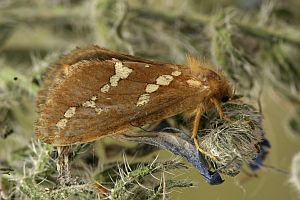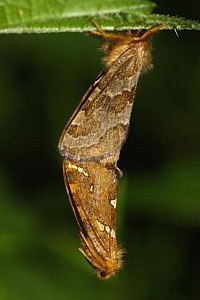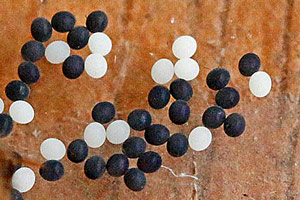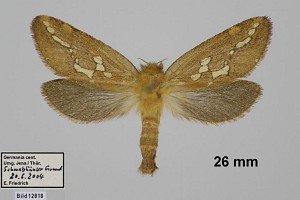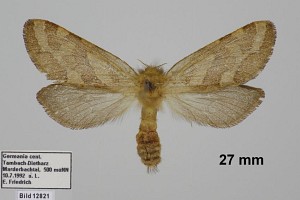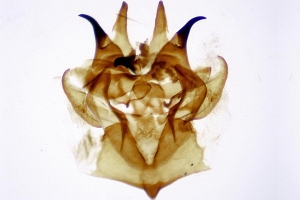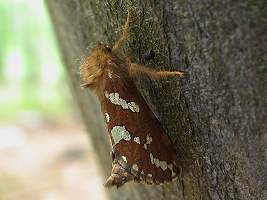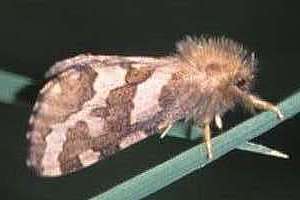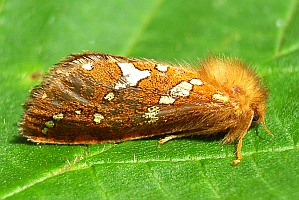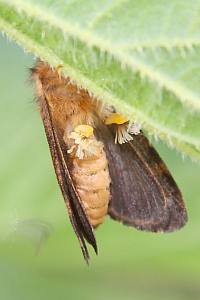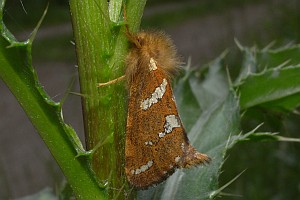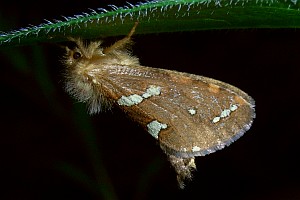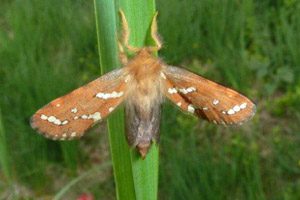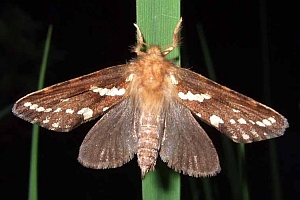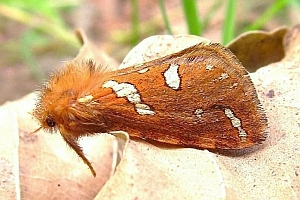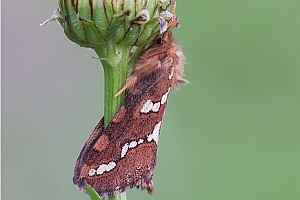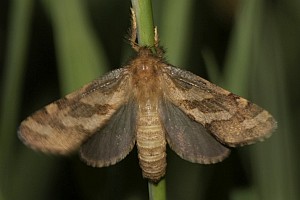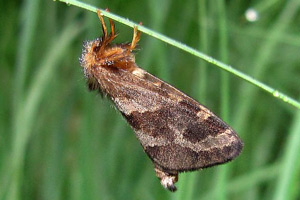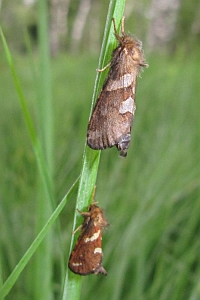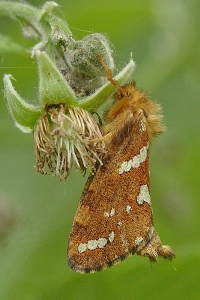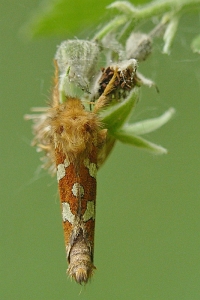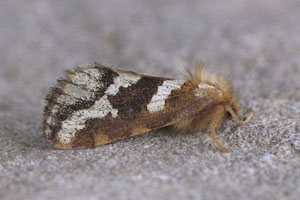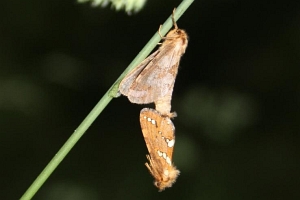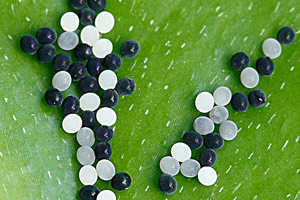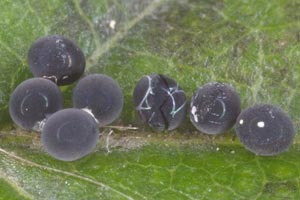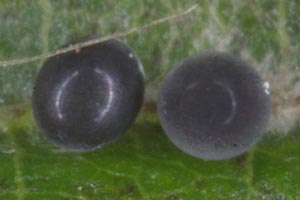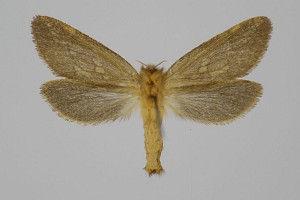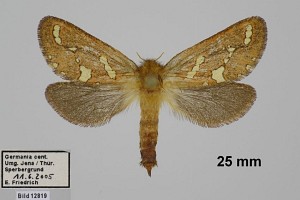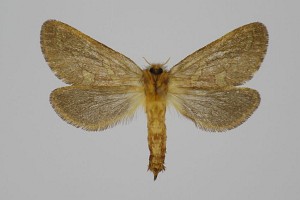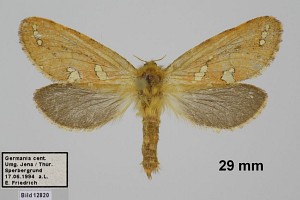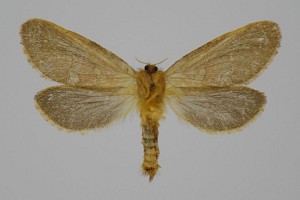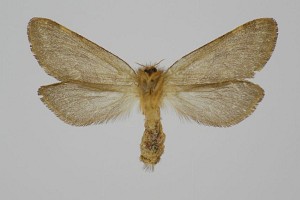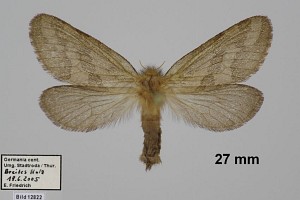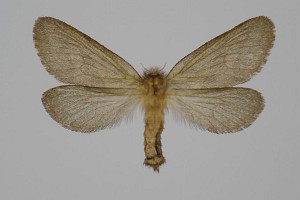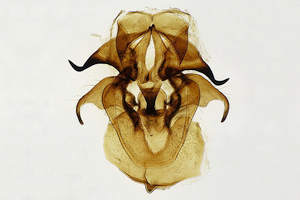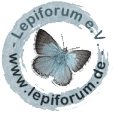

 +31Kontinente:EUAS
+31Kontinente:EUAS1. Lebendfotos
1.1. Falter
1.2. Kopula
1.3. Ei
2. Diagnose
2.1. Männchen
2.2. Weibchen
2.3. Genitalien
2.3.1. Männchen
2.4. Erstbeschreibung
3. Weitere Informationen
3.1. Andere Kombinationen
- Phalaena (Noctua) hecta Linnaeus, 1758 [Originalkombination]
- Hepialus hectus (Linnaeus, 1758)
3.2. Synonyme
- Phymatopus jodutta (Denis & Schiffermüller, 1775)
- Phymatopus clavipes (Retzius, 1783)
- Noctua nemorosa Esper, 1786
- Phymatopus unicolor (Petersen, 1902)
- Phymatopus decorata (Rebel, 1910)
- Phymatopus hectica (Bang-Haas, 1927)
- Phymatopus zetterstedti (Burrau, 1950)
- Phymatopus radiata (Lempke, 1959)
- Phymatopus continua (van Wisselingh, 1961)
3.3. Taxonomie und Faunistik
P. hecta ist in Europa weit verbreitet und reicht ostwärts bis in den Fernen Osten Russlands. Alte Meldungen aus Japan betreffen die mittlerweile abgetrennte Art Phymatopus japonicus Inoue, 1982.
Tshistjakov (1996) erkannte nicht nur Phymatopus japonicus als eigenständige Art an, sondern wertete auch die von Bang-Haas (1927: 84) beschriebene Subspecies "Hepialus hecta hectica" zur Art auf und gliederte sie in 2 Unterarten: Phymatopus hecticus hecticus (Bang-Haas, 1927) ("type locality: East Sayan Mountains, Tunkinskie Golzy Range, Buryatia, Russia)" und Phymatopus hecticus albomaculatus Tshistjakov, 1996 ("Holotype: Russian Far East, Primorskii krai, ♂, with hand-writing label (in Russian): "Middle Bikin river, Okhotian zone [mountain taiga forest], Mt. Lobelasa [at present – Gol'tzovaya], 19.VII [19]48""). Er begründete die Neubeschreibung mit äußeren und mit Genitalunterschieden, doch genau wegen fehlender Genitalunterschiede wurden P. hecticus und seine ssp. albomaculatus später wieder mit P. hecta synonymisiert (Grehan et al. 2023: 200). P. japonicus blieb hingegen als Art erhalten.
(Autor: Erwin Rennwald)
3.4. Literatur
- Bang-Haas, O. (1927): Horae Macrolepidopterologicae regionis palaearcticae 1: I-XXVIII, 1-128, pl. 1-11. Dresden-Blasewitz (Verlag Dr. O. Staudinger & A. Bang-Haas).
- Buser, H., Huber, W. & R. Joos (2000): Phymatopus hecta. — In: Pro Natura – Schweizerischer Bund für Naturschutz (Hrsg.) (2000): Schmetterlinge und ihre Lebensräume. Arten, Gefährdung, Schutz. Schweiz und angrenzende Gebiete. Band 3: 90-93. Egg (Fotorotar AG).
- Grehan, J.R., Mielke, C.G.C., Turner, J.R.G. & J.E. Nielsen (2023): A Revised World Catalogue of Ghost Moths (Lepidoptera: Hepialidae) with taxonomic and biological annotations. — ZooNova Occasional Papers in Zoology 28: 1-337. [PDF auf zoonova.afriherp.org]
- Erstbeschreibung: Linnaeus, C. (1758): Systema naturae per regna tria naturae, secundum classes, ordines, genera, species, cum characteribus, differentiis, synonymis, locis. Tomus I. Editio decima, reformata. 1-824. Holmiae (Laurentius Salvius).
- Speidel, W. (1994): Phymatopus hecta. — In: Ebert (1994) [= Ebert 3], 130-134.
- Tshistjakov, Y.A. (1996): Taxonomic study of the Far Eastern Hepialidae (Lepidoptera). Record 1. On systematic position of the Phymatopus taxa described from the east Palaearctic. — Far Eastern Entomologist, 36: 1-8. [PDF auf biosoil.ru]
- Turner, J. R. G. (2018): Bror Hanson's ‘About Hepialus hecta’ (1938): a pioneering study of moth behaviour (Lepidoptera, Hepialidae). — Entomologist's Gazette 69 (3): 210-222.





























